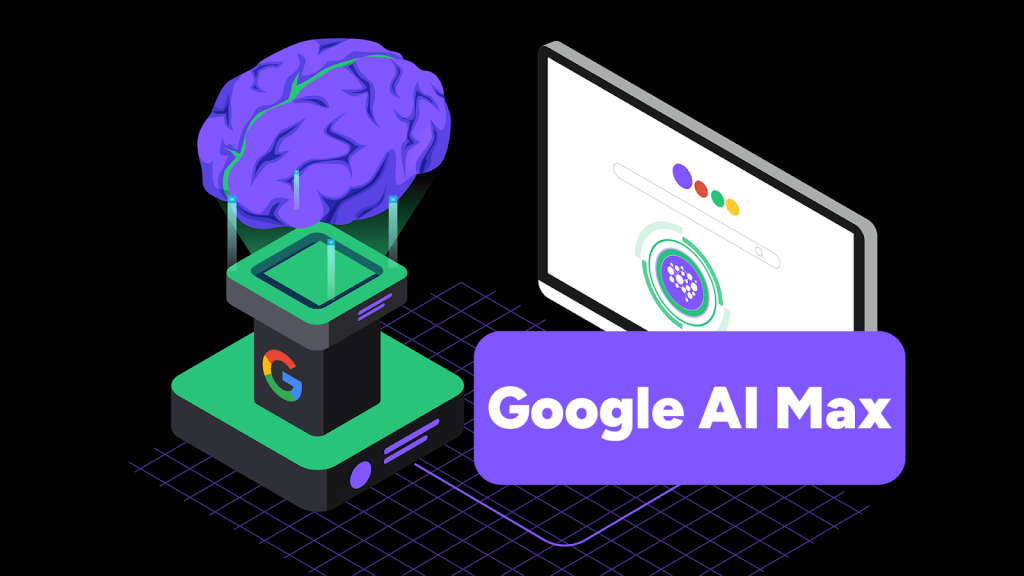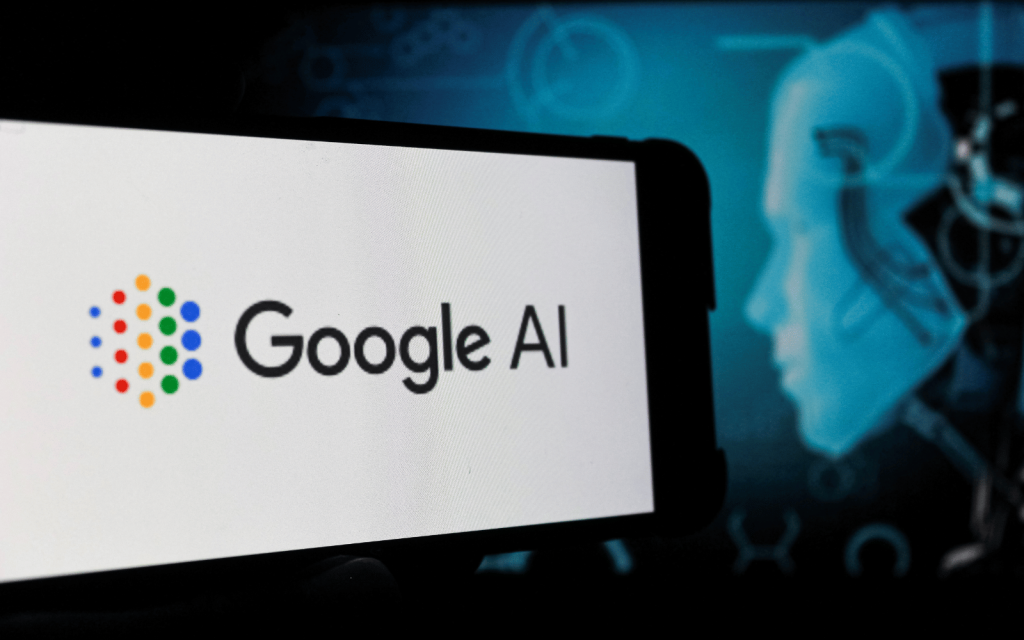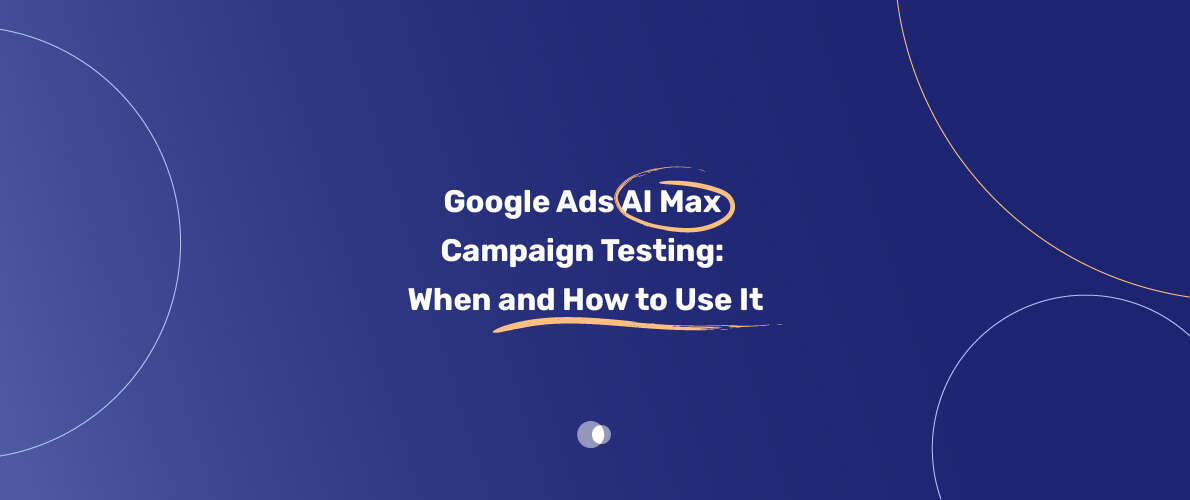Let’s cut through the hype: Google Ads AI Max campaign testing is everywhere in the digital marketing world right now. If you’re anything like me, you’ve probably heard some wild claims—skyrocketing conversions, smarter automation, and the kind of reach you always dreamed of. But, as someone who’s managed more than a few Google Ads accounts and even worked with a Google AdWords company in Dubai, I’m here to say: the “magic” of AI Max isn’t quite as simple as flipping a switch. Sometimes it’s a golden ticket; sometimes it’s a wild goose chase. So, let’s get real about when, why, and how to test this new campaign type, and what it really means for your bottom line.
Table of Contents
Introduction: The AI Max Buzz—Is It Worth Your Time?
You know that moment when a new Google Ads feature drops and everyone’s inbox lights up with case studies and “game changer” headlines? That’s exactly what’s happened with Google Ads AI Max campaign testing. I’ll admit, I was initially skeptical. I’ve seen too many “set it and forget it” promises from ad tech—some work, some flop. But after rolling out AI Max for a handful of clients (one a tech startup, the other an e-commerce giant), I can say this: results vary, and the secret is knowing when to use it, how to test it, and how to blend it with your traditional Search campaigns.
And if you’re wondering about how AI Max fits into a global strategy, especially if you’re working with a Google AdWords company in Dubai or any other cosmopolitan hub, stick with me. The nuances matter.
What Exactly Is Google Ads AI Max?
Okay, let’s break it down. Google Ads AI Max is Google’s latest crack at AI-powered Search campaigns. It’s designed to stretch your reach further than ever, using broad match and even “keywordless” technology to find users you never knew existed. Sounds cool, right? Here’s the kicker—it doesn’t just expand your targeting. AI Max will write new headlines and descriptions for you, pulling from your landing pages and existing ads. And it can even send traffic to whatever landing page Google’s AI thinks is most relevant, not just the one you picked. (Yes, you can exclude URLs, but still—talk about giving up control.)

When I first tried AI Max, I was equal parts excited and terrified. I mean, who really wants to hand over creative and landing page control to an algorithm? But, as I quickly learned, the real power is in the AI’s ability to find search demand you never would have uncovered on your own. That said, you need to be ready for some surprises—good and bad.
How AI Max Differs From Regular Search Campaigns
If you’ve spent years perfecting your Search campaigns—painstakingly choosing keywords, sculpting ad copy, and dialing in landing pages—you might find AI Max a bit… jarring. Let’s get specific:
- Targeting: With regular Search, you handpick your keywords (exact, phrase, broad—you know the drill). AI Max? It’s more like, “Here’s my site, go wild.”
- Ad Copy: Every word, comma, and emoji is under your thumb in Search. With AI Max, Google generates variations automatically—though you can still nix anything you hate.
- Landing Pages: In regular Search, you set the destination for each keyword. AI Max takes that wheel, too, choosing what it thinks is best (based on your site and the user’s search intent).
In my experience, this can be freeing for discovery campaigns but is a nightmare if you’re in a heavily regulated industry or if your landing pages are a bit… outdated. (Been there. Not fun.)
Performance vs. Control: The Classic Tug-of-War
Let’s talk turkey. What do you gain and what do you lose with AI Max?
What You Control With Regular Search
- Exact match, phrase match, or broad—you decide.
- Custom copy for each keyword or ad group.
- Tight landing page mapping.
- Micro-control over bids, budgets, and negative keywords.
- Asset pinning for creative control.
What You Give Up With AI Max
- Google’s AI expands targeting far beyond your keyword list (sometimes too far).
- Ad variations are AI-generated (you can remove, but not always pre-approve).
- The AI picks the landing page—again, you can exclude, but not specify per keyword.
- No asset pinning if you’re using final URL expansion.
What You Get Back
- More conversions—on average, Google claims a 14% bump, with some seeing up to 27%. (Yes, I’ve seen both ends of that spectrum…)
- Enhanced reporting: You’ll see exactly which search terms came from your keywords and which the AI found.
- Brand and geo controls: You can block competitor terms or make sure your brand always shows, plus target by user intent for locations.
Here’s my take: If you need control (compliance, brand, regulated industries), stick with Search. If you’re in explore mode, AI Max is like a truffle pig sniffing out hidden demand.
When to Test AI Max: Real-World Scenarios
I’ll never forget the first time I tested AI Max for a SaaS client who’d maxed out impression share on their core keywords. Overnight, we saw a 19% jump in lead volume—almost all from search terms we’d never targeted before. But it’s not always unicorns and rainbows.
Best scenarios for AI Max:
- Your account is heavy on exact and phrase match—there’s untapped search volume out there.
- Your landing pages are fresh, detailed, and well-organized. Remember, AI Max is only as good as the content it pulls from.
- You’ve squeezed your current keywords dry—maxed share, nothing left to bid up.
- You’re okay with a learning period (usually one to two weeks)—it takes time for Smart Bidding to kick in.
I’ve seen AI Max shine in campaigns where discovery is the name of the game, or when you’re entering a new market and need to cast a wider net. In fact, this is where Google Ads optimization Dubai specialists are seeing outsized results, especially in competitive verticals like travel or real estate.

When to Stick With Regular Search
Not every account is suited for AI Max. I’ve run campaigns for legal firms and financial services where compliance is everything. In those cases, every word needs to be vetted, every click justified. So, here’s when regular Search is your best bet:
- You have tight budgets and need predictable spend.
- You already know which keywords convert—why mess with a winning formula?
- Your ads must strictly adhere to brand guidelines, or you’re in a regulated industry.
- You’re juggling multiple clients who have different risk appetites.
If your website is a bit messy (or changes often), or you’re running on a shoestring budget, the unpredictability of AI Max can sink your ROI. And, honestly, nothing’s worse than seeing your ads go to a landing page that’s out of date—or worse, broken. Been there, done that, bought the T-shirt.
Hybrid Campaign Strategies for Maximum Impact
Let’s get real—most top advertisers are running both types. There’s no need to pick a camp. In fact, some of my best results have come from hybrid setups where Search campaigns “own” the core, high-intent keywords (think brand defense, competitor terms, bottom-funnel queries) and AI Max runs wild on discovery and upper-funnel expansion.
The trick? Campaign prioritization. Make sure your exact match Search campaigns have priority so Google doesn’t siphon off your most profitable traffic into AI Max. Use negative keywords and campaign exclusions to keep things tidy.
Picture this: you’re running a big seasonal promo. Your core Search campaign covers all the usual suspects. Meanwhile, AI Max is out there finding new long-tail queries, weird search phrases, and conversational searches you’d never think to bid on. Suddenly, you’re getting incremental conversions from totally new customers.
If you’ve ever tried to buy Google Ads account or set up parallel campaigns for testing, you’ll appreciate the flexibility this approach offers. Just remember: reporting and segmentation are key—otherwise, you’ll never know which campaign is pulling its weight.
Industry-Specific Insights: Ecom, B2B, Lead Gen, Local
Ecommerce
If you’re running an online shop, AI Max can be a revelation—especially if your product feed is solid and your landing pages are well-optimized. Google’s AI is surprisingly good at matching users to relevant product pages, and it integrates nicely with Merchant Center. But here’s my warning: garbage in, garbage out. Bad product descriptions or missing data will hurt you more with AI Max than with regular Search.
Lead Generation
Here’s where things get tricky. I ran AI Max for a B2B SaaS lead gen client, and while we saw a big increase in lead volume, the quality was all over the place. Sales was drowning in junk leads—more noise than signal. If you’re going this route, be prepared to dial in negative keywords, landing page exclusions, and maybe even pause the campaign if quality tanks.
Local Services
For multi-location businesses—think plumbers, clinics, or franchises—AI Max’s geo intent targeting is a game-changer. You can reach folks who are searching in your service area even if they’re not physically there. Just make sure your Google Business Profile is up-to-date.
B2B
In my experience, regular Search still reigns supreme for B2B. Longer sales cycles, complex buyer journeys, and the need for laser-focused messaging make AI Max a risk. That said, I’ve seen some success using AI Max for top-of-funnel research queries. Just don’t expect miracles if your product needs a nuanced pitch.
For all industries, don’t forget about AdWords management Dubai—local expertise matters when you’re dealing with region-specific nuances, language, and competitor targeting.
Technical Requirements and Gotchas
Heads up: AI Max isn’t just “set and forget.” There are some non-negotiable settings:
- Smart Bidding only: You must use Maximize conversions or Maximize conversion value.
- Text customization: Required for final URL expansion.
- No asset pinning: If you use final URL expansion, forget about pinning headlines or descriptions.
Regular Search? Way more flexible. Any bidding strategy is fair game, you can pin assets, and you’re in the driver’s seat for URLs.
One client learned this the hard way after Fix google ads account they had to rebuild all their campaigns and found AI Max’s requirements a bit too restrictive for their compliance needs.

The Bottom Line: Should You Dive In Now?
So, after all this, what’s my verdict? AI Max isn’t here to replace regular Search—it’s here to extend it. The 14% average improvement Google touts is real, but it’s driven by expanding into new keyword territory, not juicing up your existing keywords.
Here’s my advice:
- Start with AI Max if: You’re stuck with low impression share, mainly use exact/phrase match, your site is solid, and you can handle a learning phase.
- Stick with regular Search if: You’re already hitting targets, need total control, or compliance is king.
- Test both if: You want to squeeze every drop of performance from your account, have budget room for side-by-side testing, or want to break into new keyword areas.
For most, the future looks like a blended approach: regular Search for your bread-and-butter, AI Max for expansion and discovery. The question is—are you ready to test now, while there’s still an edge to be gained? Or will you wait until everyone else catches on?
Remember, Google Ads AI Max campaign testing is about finding new opportunities, not just optimizing what you already have. And that—done right—can be transformative.
Why Admoon is Your Best Bet for Google Ads Success
Let’s face it: all this tech is hard to keep up with. Whether you’re reeling after a suspension, thinking of expanding into a new market, or just want to outsmart your competitors, you need a partner who’s been there before. That’s where Admoon comes in.
- Local expertise: With teams in Iran and the UAE, we know the ins and outs of regional performance, language, and compliance.
- Full-service: From campaign setup to optimization, suspension recovery, and reporting, we’ve got your back.
- Transparent results: We show you exactly what’s working, so you can make informed decisions.
Ready to take the next step? Let’s talk about how we can help you turn Google Ads into your most profitable channel yet.



